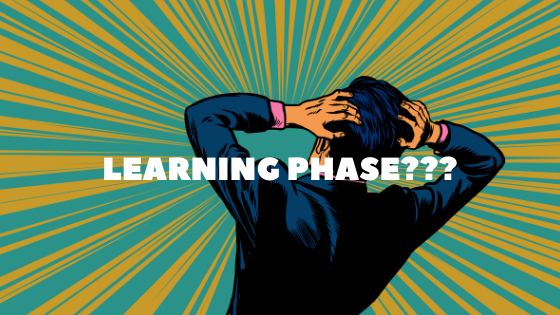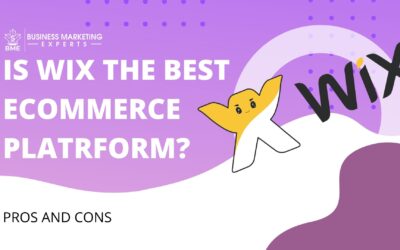So…you’ve finally launched your first Facebook ad campaign! That’s exciting! It means you’re ready to take your business to the next level.
You’re here because you launched your campaign and saw your Ad Set go into the “Learning Phase”. You’re curious! I put this together to help answer a lot of the questions that you might have. It’s short, concise and to the point.
During the “Learning Phase” the initial performance of your campaign will significantly fluctuate. This is normal. It only lasts for a short period of time.
Do not panic! It’s important to know that many campaigns go through an initial data collection period. This period is the “Learning Phase”
What is the Facebook Learning Phase?
The “Learning Phase” is the period of time that Facebook takes to learn how it will generate the best results for your campaign.
Facebook presents your ads to different people within your target audience. Then it calculates who is most likely to take decisive action after seeing your ads.
This is how Facebook describes the “Learning Phase”:
Each time an ad is shown, our ads delivery system learns more about the best people and places to show the ad. The more an ad is shown, the better the delivery system becomes at optimizing the ad’s performance.
The learning phase is the period when the delivery system still has a lot to learn about an ad set. During the learning phase, the delivery system is exploring the best way to deliver your ad set – so performance is less stable and cost-per-action (CPA) is usually worse. The learning phase occurs when you create a new ad or ad set or make a significant edit to an existing one.
The Delivery column reads “Learning” when an ad set is in the learning phase. While the delivery system never stops learning about the best way to deliver an ad set, ad sets exit the learning phase as soon as performance stabilizes (usually after around 50 conversions).
How long does it run for?

Editing during the learning phase
- Any change to targeting
- Any change to an ad creative
- Any change to optimization event
- Pausing your ad set for 7 days or longer (the learning phase will reset once you resume the paused ad set or campaign)
- Adding a new ad to your ad set
The following two changes can identify as significant or insignificant, depending on the size of the edit.
- Bid cap or target cost amount
- Budget amount (This doesn’t count if you’re using the target cost bid strategy, in which case your budget changes won’t be considered significant)
Best Practices
During the learning phase, ad sets are less stable and usually have a higher CPA. To avoid behaviors that prevent ad sets from exiting the learning phase, we recommend you:
-
Wait to edit your ad set until it’s out of the learning phase. During the learning phase, performance is less stable, so your results aren’t always indicative of future performance. By editing an ad, ad set or campaign during the learning phase, you reset learning and delay our delivery system’s ability to optimize.
-
Avoid unnecessary edits that cause ad sets to re-enter the learning phase. Edits that meaningfully change how your ad set might perform in the future can cause an ad set to re-enter the learning phase. Only edit your ads or ad set when you have reason to believe that doing so should improve performance.
-
Avoid high ad volumes. When you create many ads and ad sets, the delivery system learns less about each ad and ad set than when you create fewer ads and ad sets. By combining similar ad sets, you also combine learnings.
-
Use realistic budgets. If you set a very small or inflated budget, the delivery system has an inaccurate indicator of the people for whom the delivery system should optimize. Set a budget large enough to get at least 50 total conversions and avoid frequent budget changes (which can cause an ad set to re-enter the learning phase).
The learning phase is necessary to help the delivery system best optimize ads, so you shouldn’t try to avoid the learning phase completely. Testing new creative and marketing strategies is essential for improving your performance over time.
More than 7 days in “Learning Phase”??
If 7 days have passed since a significant edit and your ad set still hasn’t exited the learning phase, the Delivery column status will read “Learning Limited”.
This usually occurs when:
-
Your bid control or cost control is too low. Consider raising your bid/cost control.
-
Your budget is too low. Consider raising your budget.
-
Your audience size is too small. Consider expanding your audience.
-
You have too many ad sets. Consider using fewer ad sets (for example, by combining audiences) to aggregate delivery learnings.
-
Other ad sets from the same ad account or Page are winning auctions instead. Consider combining ad sets to avoid high audience overlap.
-
Your optimization event occurs very infrequently. Consider optimizing for an event that occurs more frequently. For example, if you see fewer than 50 purchase events in a week, consider optimizing for add to cart events instead.
If your ad set failed to exit the learning phase, consider making a significant edit to resolve one of the above issues.
I help businesses develop lead generation and digital marketing campaigns that deliver results. Ask me about my success stories florind@businessmarketingexperts.ca
In the last 7 years, Florind has mastered packaging brands, products, and services in today’s digital landscape. He brings brands and customers together in a very natural way.
The first word that clients describe Florind with is results – measurable, tangible/real, and trackable. Transparency is rare in the industry but data never lies. By combining analytics, systems, automation, and metrics – Florind has been able to deliver exponential results for his clients. His attention to detail and his pursuit of efficiency and effectiveness is why clients love him and the results he delivers.





0 Comments